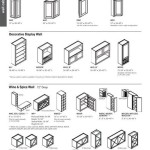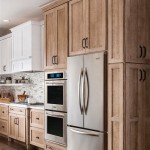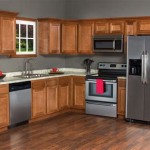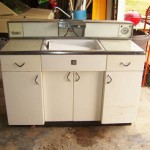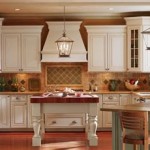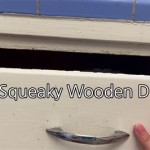How to Install Beadboard on Kitchen Cabinets: A Step-by-Step Guide
Transform your kitchen cabinets with the classic charm of beadboard, adding a touch of cottage-style elegance to your home. With the right materials and a bit of patience, you can effortlessly achieve this beautiful update on your own.
Materials You'll Need:
- Beadboard panels (measured and cut to fit your cabinets)
- Adhesive (heavy-duty contact cement or liquid nails)
- Caulk (in a matching color to your beadboard)
- Primer (optional for unfinished beadboard)
- Paint (optional for a customized finish)
- Trim molding (for the edges of the beadboard)
- Measuring tape
- Level
- Pencil
- Sandpaper or sanding sponge
- Tack cloth
Step-by-Step Instructions:
Step 1: Prepare the CabinetsThoroughly clean your kitchen cabinets to remove any dirt or grease. Sand any uneven surfaces or imperfections to create a smooth base for the beadboard.
Step 2: Measure and Cut the BeadboardMeasure the height and width of each cabinet door. Transfer these measurements to the beadboard panels and cut them accordingly using a saw. Ensure that the cuts are precise and clean.
Step 3: Apply AdhesiveSpread a thin layer of adhesive evenly over the back of each beadboard panel. Carefully position the panels on the cabinet doors, aligning them precisely with the edges. Press firmly to secure them in place.
Step 4: Install the Trim MoldingCut the trim molding to the desired lengths and miter the corners for a seamless finish. Apply a thin bead of adhesive to the back of each molding piece and press it firmly onto the edges of the beadboard, mitering the corners.
Step 5: Caulk and SealApply caulk to seal any gaps between the beadboard, trim molding, and cabinet surfaces. Smooth out the caulk using a damp finger or caulk tool. Once the caulk has dried, touch it up with paint if desired.
Step 6: Prime and Paint (Optional)If you are using unfinished beadboard, prime it before painting to improve adhesion and coverage. Once primed, apply multiple coats of paint in your desired color. Allow each coat to dry completely before applying the next.
Step 7: Finishing TouchesInstall any hardware, such as knobs or handles, to complete the look. Inspect the beadboard and make any necessary touch-ups with paint, caulk, or sandpaper.
Tips for a Professional Finish:
- Use a level to ensure that the beadboard is installed straight and evenly.
- Apply even pressure when installing the beadboard to avoid gaps or bulges.
- Protect your work surface with a drop cloth to prevent adhesive or paint spills.
- Allow ample time for the adhesive and paint to dry completely before using your cabinets.

Beadboard Kitchen Cabinets Everything To Know

Beadboard Cabinet Doors For Your Kitchen Cabinetdoors Com

Beadboard Kitchen Cabinets Everything To Know

Beadboard Kitchen Cabinets Everything To Know

Diy Beadboard On Our White Painted Kitchen Cabinets Project Goble

Beadboard Kitchen Cabinets Everything To Know

Diy Beadboard Kitchen Cabinets Project The House On Silverado

Diy Beadboard On Our White Painted Kitchen Cabinets Project Goble

Beadboard Kitchen Cabinets Everything To Know

Beadboard Kitchen Cabinets Everything To Know



